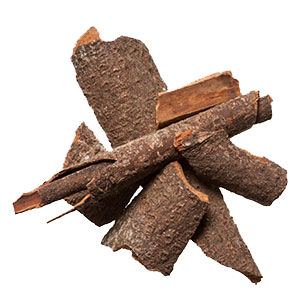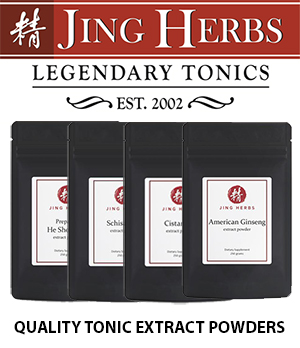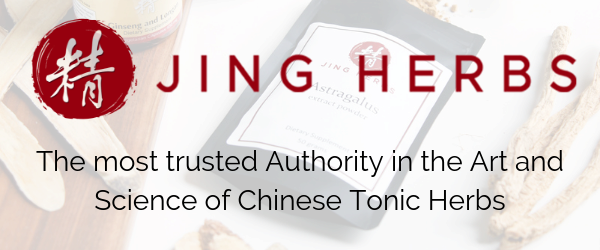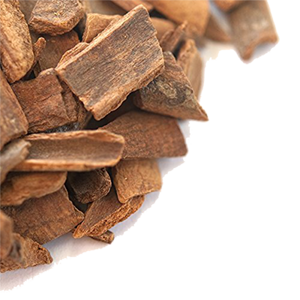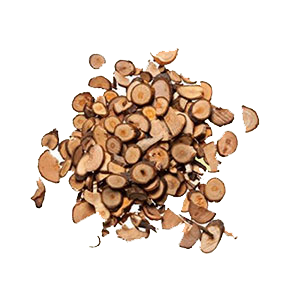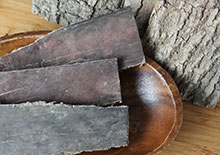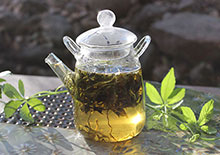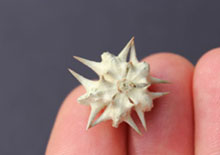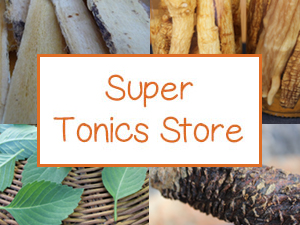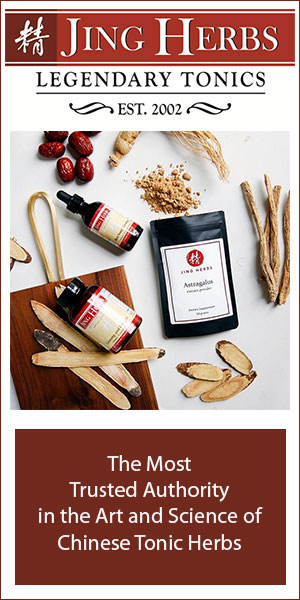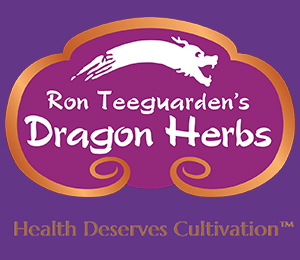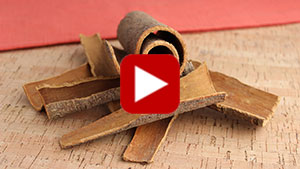- Home
- Chinese Herbs
- Chinese Cinnamon
About Chinese Cinnamon Bark (Rou Gui) And Twig (Gui Zhi)
Intro | What is Chinese Cinnamon? | Chinese Bark Vs. Common Spice | Two Main Types | How to Use | Precautions | Shop

Most people are familiar with cinnamon as a culinary spice or natural flavoring, but a variety that is less familiar here in the West is the one known as Chinese cinnamon.
This is the specific type of cinnamon referred to as "Chinese" cinnamon or Rou Gui in Chinese herbalism. It is commonly found in thick bark-like pieces rather than the typical "cinnamon stick" or rolled up quill.
Table of Contents
Intro | What is Chinese Cinnamon? | Chinese Bark Vs. Common Spice | Two Main Types | How to Use | Precautions | Shop
The other Chinese variety is called cinnamon twig or Gui Zhi, which
is derived from the twig branches of the cinnamon tree as opposed to the
trunk itself.
While both versions come from the same genus Cinnamomum as other types of cinnamon, they are the main ones utilized for their tonifying qualities. Subsequently, they are frequently classified alongside some of the top major tonic herbs in the Chinese herbal system.
What is Chinese Cinnamon?
Rou Gui cinnamon, like all types of cinnamon comes from the stripped bark layers of cinnamon trees. It is not related to "rougui tea", a type of oolong, presumably named so for its cinnamon-like taste accents.
Cinnamomum cassia is native to China, especially southern provinces and is mainly produced in Yunnan, Hainan, Guangdong and Guangxi. Rou Gui or Chinese cinnamon bark, however, can also be sourced from other cinnamon species, not just this variety.
Although it comes from the same or similar species utilized to make the cinnamon powder found in most kitchen spice racks, there are some differences between Chinese cinnamon and the standard spice many know as cinnamon.

Chinese Cinnamon Bark Vs. Common Cinnamon Spice
The Chinese cinnamon used as a tonic herb is very thick, more like actual bark, because it is harvested when older or more mature. In contrast, the average cassia "cinnamon spice" is taken exclusively from the thin inner bark layers that are much younger in age and therefore tend to roll up into hard stick-like pieces or quills.
Chinese cinnamon is a thicker dense yet flexible material and doesn't roll up as tightly. It is usually available in large woody strips as well as loosely rolled-up tubular pieces, depending on the source.
Chinese cinnamon is, in fact, graded on thickness of the bark, which
is an indication of age. The older the better and often more expensive.
Premium grades can be a quarter of an inch thick or more.
You
will usually notice that the Chinese barks also have the exterior cortex
layer as well as the inner bark portion. Perhaps this is to help
preserve the constituents.
Some Chinese cinnamon, like the rare An Nan Cinnamon or Vietnamese Rou Gui, is highly revered for its exceptional quality.
On average it is usually more expensive than common cassia cinnamon or ceylon cinnamon types. While these popular culinary cinnamons are well-known for their health-enhancing potential and can be substituted in a pinch, Chinese varieties are believed to offer different therapeutic properties.

Two Main Types of Chinese Cinnamon
1) Rou Gui, Chinese Cinnamon Bark - This is the mentioned thick bark of the tree trunk itself. It works primarily with the Kidney, Spleen, Heart and Liver organ meridian systems. Energetically it is described as pungent, sweet and hot.
2) Gui Zhi, Cinnamon Twig - Again, this variety is derived from small tree branches or twigs and is commonly used as sliced pieces. It works primarily with the Heart, Lung and Bladder systems. Energetically it is described as acrid, sweet and warm.
Rou Gui, Chinese Cinnamon Bark Uses
Rou Gui, also called Kuei Pi, is a valued Yang tonic in Chinese herbalism. It is especially utilized for its warming influence as a Kidney Yang herb.
Also described as an herb that "warms the deep interior", it is famed for its ability to counteract cold conditions especially affecting internal organs like the kidneys. It is viewed to be particularly beneficial for the elderly.
Likewise, it is valued for alleviating joint pain or weaknesses that are exacerbated by exposure to extreme winter climates.
In some research on this variety, results identified that sesquiterpenoids might be the active compounds providing usefulness for kidney-related conditions, like diabetic nephropathy.
Chinese cinnamon is also considered useful for the heart, liver and spleen organ systems.
It is known for its hot qualities and sweet pungent taste that promotes good circulation and movement of energy stagnation, "allowing for Chi to freely circulate."
The characteristic flavor and fragrance of cinnamon comes from one of the main essential oils found in the bark called cinnamaldehyde. This is one of the primary active components responsible for many of its actions as a circulatory aid, anti-inflammatory and antibacterial agent.
While Chinese cinnamon bark can be used on its own as a hot tea, it is traditionally integrated into tonic formulations which contain other primary herbal substances. It is often used as an adjunctive activating herb to stimulate the actions of other herbs/tonics incorporated.
As
a Yang tonic, it is known to "invigorate Jing essence" and utilized for
its rejuvenating qualities to the reproductive system. Its warming
attributes are likewise considered a mild sexual aphrodisiac.
It can additionally be used in herbal preparations to help activate other libido supporting herbs and adaptogens such as ginseng, tongkat ali, cordyceps, schizandra, cistanche and he shou wu.
As mentioned, its Yang fortifying energy and heating influence on the kidneys and spleen helps to expel cold, damp conditions. This property also simultaneously promotes movement of the blood and Chi (Qi). It is therefore frequently used with other herbs that assist as blood and Chi tonics, such as dong quai, rehmmania and peony.

Gui Zhi, Cinnamon Twig and Its Uses
Gui Zhi is usually available in thin slices or thick pieces sourced from small branches of the tree.
In
contrast to Rou Gui or cinnamon bark, which is thought to be hotter as
well as "heavier and more protective", cinnamon twig is described as
"lighter and outward spreading", like the tree branches themselves.
Cinnamon twig or "cassia twig" is also a very common ingredient in tonic herbal blends and classic Chinese formulations such as Gui Zhi Fu Ling Wan and Gui Zhi Tang.
Likewise, it is widely used with poria, as in the Dragon Herbs formula "Unlock", to improve circulation of the pelvic region, decrease female menstrual tension as well as provide prostate support to men.
Classified under the name Ramulus Cinnamomi, this variety is more specific for the heart, lung, and urinary bladder systems. Gui Zhi has similar "lifting" properties to that of Rou Gui and is utilized for it warming effects and moving Yang Chi. It is used to open the chest and limbs as well as relax tension in the shoulders and neck.
In 2017 reports published in the journal Neural Regeneration Research, Gui Zhi was shown to be potentially effective for alleviating neuroinflammation.

Chinese Cinnamon Bark and Twig Folk Uses:
- Can help to improve complexion
- Used for relieving headaches
- Warming quality may be calming to the nerves
- Strengthening to a weak lower back
- Works as a libido enhancer
- Known to relieve tension in the neck/shoulders
- Can stimulate the appetite
- Used to break up chest congestion
- Helps cold or weak lower extremities
- Moves energy stagnation, like PMS
- Functions as an antibacterial agent and anti-inflammatory
How to Use
Chinese cinnamon bark and cinnamon twig is used in teas or, as mentioned, is commercially added to preparations as an herbal supplement.
When using the whole bark or twig slices in home brews and tonic tea formulas, it is important to decoct or simmer them on very low heat as over-boiling will compromise beneficial compounds are produce bitterness.
It typically takes very little cinnamon, in comparison to other herbs used in the overall formulation, to be effective. Because of cassia cinnamon's coumarin content, high dose amounts should be avoided on a frequent basis. (Read more about this here.)
While you might enjoy experimenting with your own personalized herbal preparations, like tinctures or tonic teas using either Chinese cinnamon twig or bark, it might also be appropriate to seek the advice of a qualified tonic herbalist for additional assistance. This will allow the practitioner to tailor the most ideal formula and blend of herbs that can work to balance specific deficiencies and/or activate energies where needed.
Precautions:
Because of its very heating quality, Chinese cinnamon varieties should be used with caution by those with hot constitutions or high blood pressure. It should be avoided during pregnancy. Consult your health care provider before intake if nursing, taking prescribed medications or if you have a serious medical condition.
Shop Related Products (About Affiliates & Amazon Associate Paid Links)
Affiliate Disclaimer: This section contains affiliate product links. If you make a purchase through our recommended links, we receive a small commission at no additional cost to you. Thanks for the support.

